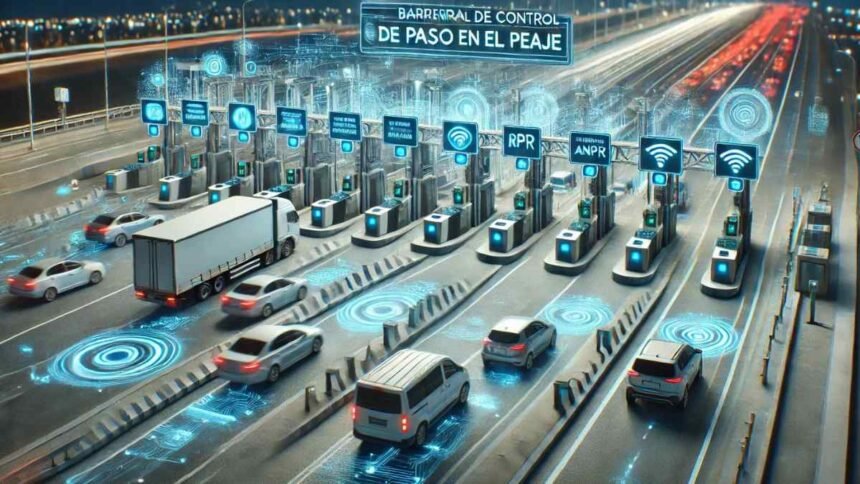The “Barrera de control de paso en el peaje” is a critical component in tolling systems, designed to manage the flow of vehicles while ensuring secure transactions. These barriers help regulate traffic, reduce congestion, and enhance security by controlling access at toll plazas, making them indispensable in modern transportation infrastructure.
Introduction
In the rapidly evolving world of transportation, managing traffic flow efficiently and securely is paramount. The “barrera de control de paso en el peaje,” or toll control barrier, plays a vital role in achieving these goals. This article explores the importance, functionality, and benefits of toll barriers, focusing on how they contribute to the smooth operation of toll plazas and the broader transportation network.
The Functionality of Toll Barriers
Toll barriers are not merely physical barriers; they are part of a sophisticated system designed to manage vehicle movement through toll plazas. These barriers are integrated with electronic toll collection systems, which identify vehicles, calculate toll charges, and ensure payment before allowing vehicles to pass. The barriers help prevent unauthorized access, ensuring that all vehicles passing through the toll plaza are accounted for and that tolls are accurately collected.
Types of Toll Barriers
- Manual Toll Barriers: Operated by toll booth operators, these barriers require vehicles to stop, pay the toll, and then proceed once the barrier is lifted.
- Automatic Toll Barriers: These are linked to electronic toll collection systems, automatically lifting once the vehicle’s payment is confirmed, reducing the need for manual intervention.
- High-Speed Toll Barriers: Designed for express lanes, these barriers operate at high speeds, allowing vehicles to pass without stopping, relying on RFID tags or license plate recognition for toll collection.
Benefits of Using Toll Barriers
Toll barriers offer numerous benefits, from enhancing security to improving traffic flow. Below are some key advantages:
- Enhanced Security: By controlling vehicle access, toll barriers reduce the risk of toll evasion and unauthorized entry, ensuring that only paying vehicles use the roads.
- Improved Traffic Management: Toll barriers help regulate traffic, reducing congestion at toll plazas by allowing for the smooth flow of vehicles. Automatic and high-speed barriers, in particular, minimize delays.
- Revenue Assurance: By ensuring that all vehicles pay the required toll, these barriers help maintain steady revenue streams for highway authorities, which are essential for road maintenance and infrastructure development.
- Integration with Modern Technology: Toll barriers are increasingly integrated with advanced technologies such as RFID, ANPR (Automatic Number Plate Recognition), and mobile payment systems, enhancing their efficiency and reliability.
The Evolution of Toll Barriers
The concept of toll barriers has evolved significantly over the years. Initially, toll plazas were entirely manual, with physical barriers that required human intervention. However, with advancements in technology, toll systems have become increasingly automated. The introduction of electronic toll collection systems has revolutionized tolling, making it faster and more efficient.
The Shift Toward Cashless Tolling
One of the most significant changes in tolling has been the shift toward cashless transactions. Modern toll barriers are designed to support cashless payment methods, including electronic toll collection systems like E-ZPass, SunPass, and FasTrak. These systems allow vehicles to pass through toll plazas without stopping, reducing congestion and improving traffic flow.
Challenges in Implementing Toll Barriers
Despite their benefits, implementing toll barriers comes with challenges. These include the high cost of installation and maintenance, the need for regular updates to accommodate new technologies, and the potential for technical malfunctions. Moreover, as traffic volumes increase, toll barriers must be designed to handle higher capacities without causing delays.
Addressing Traffic Congestion
One of the primary concerns with toll barriers is their potential to cause traffic congestion, especially during peak hours. To mitigate this, toll authorities are increasingly turning to high-speed barriers and open road tolling, which allows vehicles to pass through without stopping. Additionally, the use of multiple payment lanes and the integration of dynamic pricing models can help distribute traffic more evenly across toll plazas.
Future of Toll Barriers
The future of toll barriers lies in further integration with smart transportation systems. As cities and highways become more connected, toll barriers will play a crucial role in managing traffic and ensuring seamless travel experiences. Innovations such as AI-powered tolling, predictive maintenance, and real-time traffic management systems will likely shape the next generation of toll barriers.
AI and Machine Learning in Toll Systems
Artificial intelligence (AI) and machine learning are poised to revolutionize toll systems. By analyzing traffic patterns and vehicle data, AI can optimize toll operations, predict maintenance needs, and even dynamically adjust toll rates based on real-time traffic conditions. This will not only improve the efficiency of toll barriers but also enhance the overall user experience.
Conclusion
The “Barrera de control de paso en el peaje” is an essential element of modern tolling systems, ensuring that vehicles move efficiently and securely through toll plazas. As technology continues to advance, toll barriers will become even more integral to traffic management, contributing to the development of smarter, more connected transportation networks. By understanding the functionality, benefits, and challenges associated with toll barriers, we can appreciate their critical role in maintaining the efficiency and security of our roads.
For More Visit, Viraltimes.co.uk







